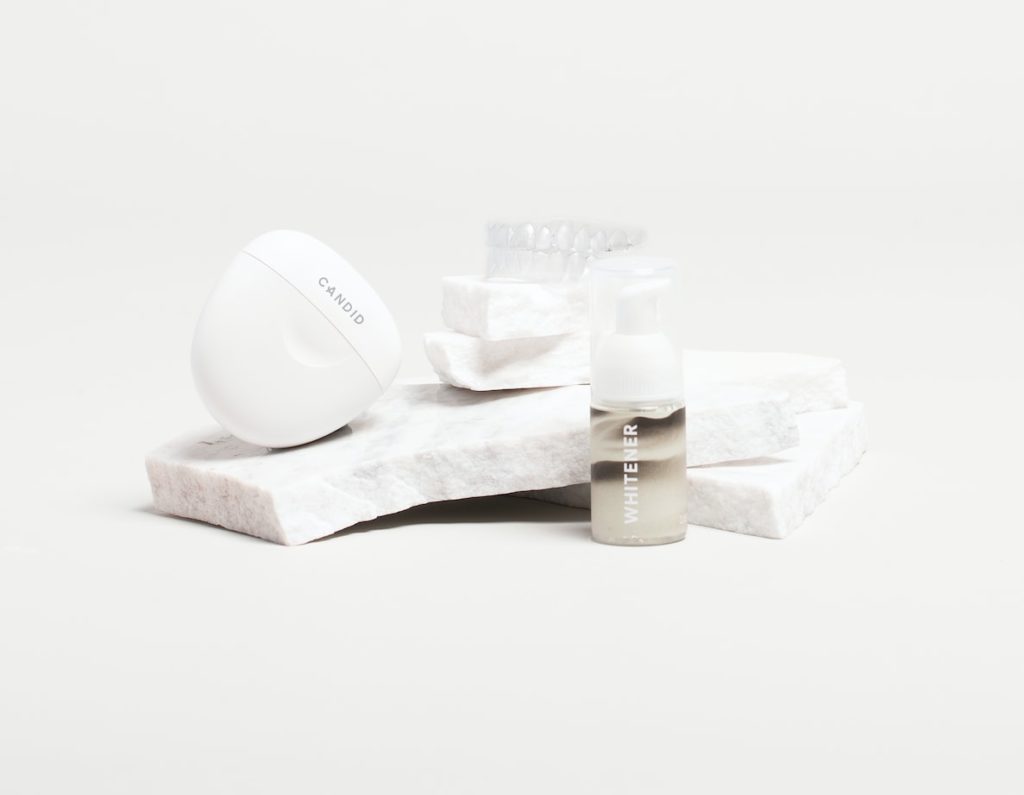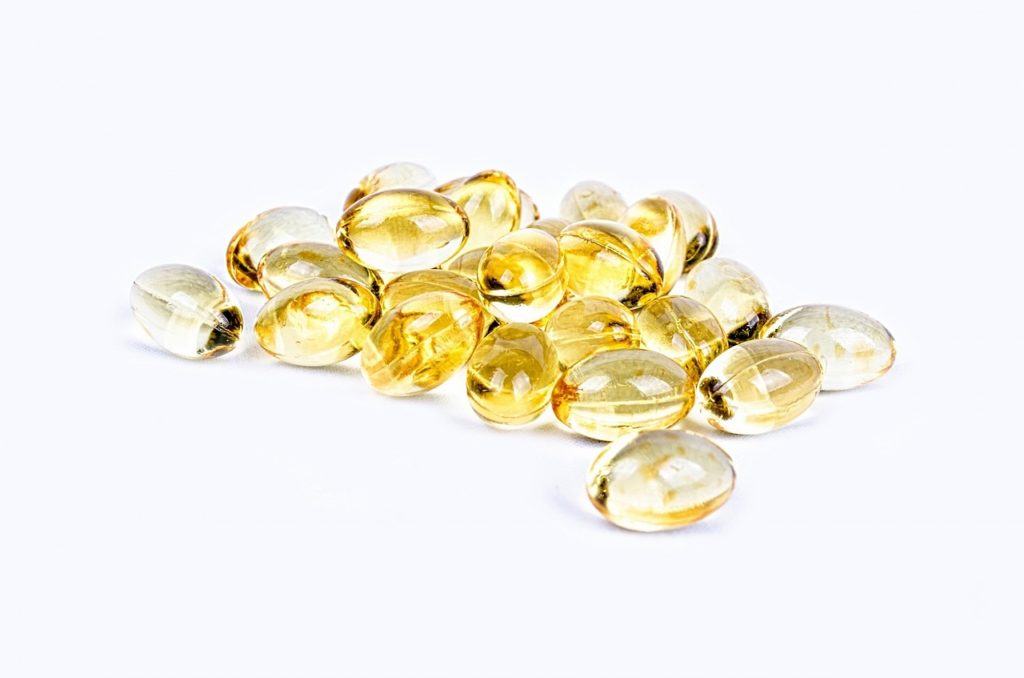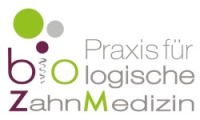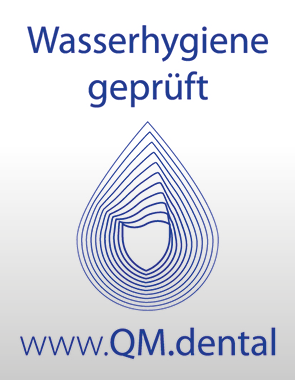Biological Dentistry
Our treatments focus on the complex human organism as an integrative system with countless interactions.
Only comprehensive diagnostics that go far beyond the classic standards enable a sustainable improvement in health. We combine the knowledge of school dentistry with the many advantages of a holistic approach to our body.
We do not only treat symptoms which are obviously associated with (tooth) pain, because chronic diseases of the body often happen far away from their root cause which is normally subliminally and almost unnoticed (“silent inflammation”) – mostly located in the jaws.
Studies show that about 70% (!) of all chronic diseases have their origin in the mouth and were even triggered there by well-intentioned dental treatments.
So, we know what pathogenic consequences it can result if dead, decaying organs intentionally, e.g. in the form of root canal treated teeth, remain in the jawbones. The selection of a filling resin, crown material, prosthesis or implant materials can also have lasting negative effects on the health of the entire organism. Especially metals are a vital component of these negative side-effects. For example, physical or mental exhaustion, a wide variety of allergies and even autoimmune diseases can result of these interferences.
Our rehabilitation concept is structured in such a way that negative interactions and disruptive factors are eliminated and avoided in advance for upcoming treatments.
The materials used for dentures, implants and the like can be tested individually on request and play a central role in our biological treatment.
Dead teeth – anything but harmless!
Current studies clearly show that even with a perfectly filled root canal, it is absolutely impossible to remove 100% of all organic tissue out of a dead tooth.
The problem: the dead tooth, which must be considered as an organ with its own nerve blood and lymphatic system, remains in the oral cavity. In the extremely sensitive region of the Trigeminus nerve.
The organic tissue in the root of the tooth is being decayed over time by invading decomposition bacteria. These bacteria gradually release harmful metabolic products (so-called “toxins”) out of the tooth into the bloodstream. These weaken the immune system in the long-term and damage the organism. Even an inconspicuous root-treated tooth can lead to massive problems in the long-term and become the possible cause of a wide range of systemic and organic diseases.
As part of an intensified diagnosis (e.g. blood examinations), we are able to determine whether a dead tooth has already become an interference field in your body. Among other things, we work closely with the renowned Institute for Medical Diagnostics (IMD) in Berlin.
Our approach in this regard is very clear: It doesn’t make sense to save a tooth at any price – certainly not at the price of your health. We would be happy to support you with this important topic in making a personal decision for further treatment of root-treated teeth.
In replacement to conventional titanium implants, modern dental implants made of ceramic have been establishing themselves more and more in dentistry for several years: The high-performance ceramic zirconium dioxide is a neutral, anti-allergenic and optimally compatible material. It has also been used successfully in orthopedics for hip joint implants for many years. The added value of these implants is often noticeable at “first glance”: the white color of the ceramic implant perfectly matches the color of your natural teeth and tooth roots and therefore does not shimmer through the mucous membrane of the gums, especially in the case of the incisors and canines. Zirconium dioxide ceramic is metal-free and biocompatible, which practically rules out allergy or intolerance reactions. Furthermore, ceramic implants are immunologically completely neutral and therefore have a high level of compatibility with the natural tissue: the bone tissue of the jaw quickly grows onto the implant and thus creates a stable and permanently secure connection between the bone and the dental implant. The gums also do not retract after the implantation, but can grow onto the ceramic implant without any gaps. Due to the neutral surface of the implant, significantly less plaque is deposited than on natural teeth, which significantly reduces inflammation of the periodontium. In this way, the new artificial tooth root (implant) naturally heals into the healthy tissue. The circulation of blood in the surrounding tissue, which is significantly reduced with conventional titanium implants, is not affected by ceramic implants. While small particles get into the tissue after a short time with metallic implants, the zirconium oxide is stable enough not to be loosened by saliva or rubbed off by chewing movements: Even after a longer period of time, no zirconium oxide particles can be found in the tissue. In order to prepare your body well for a ceramic implantation, to strengthen your immune system and to minimize possible inflammation, we use supportive measures such as taking food supplements as micronutrients. Particular attention is paid to your vitamin D level. A nutrient protocol specially designed for our practice and tailored to the procedure optimally supports your organism.
„NICO“ is the abbreviation for “Neuralgia Inducing Cavitational Osteonecrosis”.
It is also known as “Fatty Degenerative Osteonecrosis of the Jaw” (F-DOJ) or as “osteolysis of the jawbone”.
Simply explained, the NICO/FDOJ is an generally unnoticed, chronic inflammation of the jawbone, which often arises from tooth extraction wounds that have not healed optimally. Cavities often remain in these bone areas, which fill up with fatty cysts, inflammatory tissue and toxins. The result is an excessive production of RANTES chemokines as components of an inflammatory reaction.
Similar to root-treated teeth, these substances can cause a variety of symptoms elsewhere in the body, such as:
- chronic fatigue
- migraine
- Rheumatoid diseases
- hormonal disorders
- Lack of energy, up to “burn-out”
- various cardiovascular problems
- all kinds of allergies
- skin diseases
- autoimmune diseases
In our practice we work with innovative 3D X-rays (“DVT” – digital volume tomography), with the help of which these osteolysis can be diagnosed well.
In order to remove these NICO’s, a surgical opening of the respective bone area and a thorough removal of the inflamed tissue is necessary, so that only healthy bone remains after the procedure. The cavity is then disinfected and sterilized with ozone, filled with a PRF membrane and finally sewn up.
Every human being is an individual. And that is exactly why we are convinced that there cannot be “one, best material” for EVERYONE. And this is exactly where we start with our material compatibility tests: With the help of the Prognos® system (further information: www.medprevent-systems.net → vitaloDENT) we can determine within a few minutes and absolutely painlessly to what extent e. g. certain filling, crown or prosthesis material is compatible with you.
In addition, in cooperation with the Institute for Medical Diagnostics (IMD) in Berlin, we have the opportunity to test a wide variety of substances for their individual tolerance using a blood test.
Vitamin D3 fulfills many important functions in our body. As a hormone, it makes for example a decisive contribution to bone formation and can also help to reduce or prevent inflammation in the body. To reduce the risk of infection, we make sure that your body is optimally supplied with vitamin D3, especially before dental surgery on bones is taken care of. A sufficient vitamin D3 level is also very important in the context of periodontitis treatment, as it has a significant anti-inflammatory effect on the gums and periodontium.
Patients with high D3 levels also show less bleeding gums and smaller dental – gum pockets. In this way, premature tooth loss can often be avoided.
Furthermore, vitamin D3 has immunological and metabolic effects on our body: autoimmune diseases, arthritis and diabetes occur less frequently with an adequate D3 supply.
Since our immune system is also strengthened by D3, diseases such as e. g. Cardiovascular disorders and heart attacks decrease just like concentration and sleep disorders and psychological problems. Even the development of cancer cells is associated with a low D3 value.
Studies show that patients with a 25-OH vitamin D3 (calcidiol) level of over 80ng/ml are protected from most chronic diseases by about 85%.
If you take vitamin D3 permanently, please always ensure a fitting combination with vitamin K2 (MK7) to avoid too high a calcium level in the blood.
Conclusion:
Even if we spend a lot of time outdoors and in the sun, we cannot do without the additional intake of vitamin D3 in our latitudes. Otherwise, our body would still be in “immunological hibernation”, so to speak.
Only sufficiently high vitamin D3 levels can protect against acute and chronic diseases and provide you with the basis for long-term successful medical interventions.
Unfortunately, amalgam fillings are still placed in the patient’s mouth in many dental practices. But did you know that amalgam consists of around 50% mercury, along with various other metals? Incidentally, mercury is the most toxic, non-radioactive element on earth.
Therefore, at least certain groups of people have been protected from this highly toxic material since July 2018 on the basis of a regulation by the European Parliament. For example, amalgam must not longer been used as a filling material for young people under the age of 15, during pregnancy or nursing mothers. This alone indicates that amalgam fillings are anything but harmless for our body.
We therefore generally recommend replacing all existing amalgam fillings, including those that are clinically intact, with protective measures, using filling materials that are more compatible with the body, such as e.g., ceramics.
We can support you with a special “protection package”:
We make sure that you do not come into contact with mercury components either through the ambient air in the treatment room or directly in your mouth when removing the amalgam. To do this, we use a special suction method that ensures that hardly any of the dissolved amalgam meets your mucous membranes. You will also receive a gold-coated nose mask that quickly binds the mercury particles in the room air and you will also be supplied with “pure” oxygen during the treatment. Finally, a paste made from chlorella algae is introduced into the drilled cavitation, which absorbs the minimal remaining amalgam residue and removes it from the mouth by rinsing it out.
Due to the strong disinfecting and hemostatic effect of ozone, this gas is used in a wide variety of applications in our practice:
It supports the treatment of inflammatory tooth pockets, periodontitis, root caries, as well as rhagades, herpes, aphthous ulcers and other skin infections in the mouth.
By ozonating tooth fissures (pits on the chewing surface) or drilled cavities (holes) before sealing them with tooth filling material, all remaining bacteria are killed, and the development of further caries is significantly reduced.
The germ-killing and healing-promoting ozone is also used in the context of implantology and other major interventions. So e. g. after surgical interventions, the alveoli (tooth sockets) are treated with ozone at the patient’s request.
By inserting a small probe into the alveolus, an “electric field” is generated in which atomic ozone acts against bacteria, viruses and fungi.Since the ozone can penetrate deep into the bones, the sterilizing effect fights inflammation and promotes wound healing.
The use of ozone helps to avoid drugs such as antibiotics. By the way, an ozone treatment is free from undesirable side effects.
The abbreviation “PRF” stands for “platelet-rich fibrin” and means “platelet-rich fibrin matrix”.
Fibrin is a fibrous protein that is produced during blood clotting and, with its special consistency, accelerates the closure of wounds and significantly reduces the risk of infection.
A wound healing process is always a very complex process since the structure and function of a destroyed tissue has to be rebuilt.
The Choukroun A-PRF™ technology supports our patients significantly:
Dr. Joseph Choukroun developed a method in which a small amount of blood is taken from the patient and centrifuged. The result is a so-called “clot” with a highly concentrated proportion of thrombocytes, growth factors and stem cells, which contains the patient’s own body information for tissue regeneration. This “wound plaster” is placed into the affected area, which signals the body that the tissue can now be regenerated.
The A-PRF™ procedure is minimally invasive, offers a high level of safety and increases the success of the treatment, since it is based exclusively on the body’s own substances and is also absolutely tolerable.
Wurzelkanalbehandlungen
Tote Zähne – alles andere als harmlos!
Aktuelle Studien zeigen deutlich, dass es selbst bei einem perfekt gefüllten Zahnwurzelkanal nie gelingen kann, sämtliches organisches Gewebe zu 100 % aus einem Zahn zu entfernen.
Das Problem: der abgestorbene Zahn, der früher einmal ein Organ mit eigener Nerven- und Blutversorgung war, verbleibt weiterhin in der Mundhöhle.
Sein organisches Gewebe in der Zahnwurzel wird durch eindringende Verwesungsbakterien im Laufe der Zeit zersetzt. Diese Bakterien geben nach und nach schädliche Stoffwechselprodukte (sog. „Toxine“) in die Blutbahn ab. Diese schwächen das Immunsystem auf Dauer und schädigen den Organismus. Selbst ein unauffälliger wurzelbehandelter Zahn kann damit auf Dauer zu massiven Problem führen und zur möglichen Ursache vielfältiger System- bzw. Organerkrankungen werden.
Im Rahmen einer Störfelddiagnostik sind wir in der Lage, festzustellen, ob sich ein toter Zahn bereits zum Störfeld in Ihrem Körper geworden ist. Dabei arbeiten wir u. a. eng mit dem renommierten Institut für medizinische Diagnostik (IMD) in Berlin zusammen.
Unser Ansatz ist hier ganz klar: Es ist nicht sinnvoll, einen Zahn um jeden Preis zu erhalten – schon gar nicht um den Preis Ihrer Gesundheit. Gerne unterstützen wir Sie bei diesem wichtigen Thema darin, eine persönliche Entscheidung für eine weiterführenden Behandlung von wurzelbehandelten Zähnen zu treffen.
Weitere Informationen finden Sie in diesem Flyer, den Sie sich gerne ausdrucken können (download)
Keramikimplantate
Seit einigen Jahren etablieren sich in der Zahnmedizin neben den konventionellen Titanimplantaten mehr und mehr auch moderne Zahnimplantate aus Keramik: Die Hochleistungskeramik Zirkondioxid ist ein neutrales, antiallergenes und optimal verträgliches Material, das auch bereits seit vielen Jahren erfolgreich in der Orthopädie bei Hüftgelenk-Implantaten verwendet wird.
Der Mehrwert dieser Implantate fällt oft schon auf den „ersten Blick“ auf: die weiße Farbe des Keramikimplantats passt sich perfekt dem Farbton Ihrer natürlichen Zähne und Zahnwurzeln an und schimmert deshalb, besonders bei den Schneide- und Eckzähnen, nicht durch die Schleimhaut des Zahnfleisches. Zirkonoxid-Keramik ist außerdem metallfrei und biokompatibel, was Allergie- oder Unverträglichkeits-reaktionen praktisch ausschließt.

Des Weiteren sind Keramikimplantate immunologisch völlig neutral und weisen deshalb eine hohe Verträglichkeit mit dem natürlichen Gewebe auf: das Knochengewebe des Kiefers wächst rasch an das Implantat an und stellt so eine stabile und dauerhaft sichere Verbindung zwischen Knochen und Zahnimplantat her.
Auch das Zahnfleisch zieht sich nach der Implantation nicht zurück, sondern kann lückenlos an das Keramikimplantat anwachsen. Durch die neutrale Oberfläche des Implantats lagert sich deutlich weniger Zahnbelag ab als an natürliche Zähne, wodurch Entzündungen des Zahnbettes deutlich reduziert werden. Die neue künstliche Zahnwurzel (Implantat) heilt auf diese Weise natürlich in das gesunde Gewebe ein. Die zirkuläre Durchblutung des umliegenden Gewebes, die bei Implantaten aus herkömmlichem Titan deutlich verringert ist, wird von den eingesetzten Keramikimplantaten nicht beeinträchtigt. Während bei metallischen Implantaten nach kurzer Zeit kleine Partikel ins Gewebe gelangen, ist das Zirkonoxid stabil genug, um nicht durch Speichel gelöst oder durch Kaubewegungen abgerieben zu werden: Auch nach längerer Zeit sind im Gewebe keine Zirkonoxidpartikel feststellbar.
Um Ihren Körper gut auf eine Keramik-Implantation vorzubereiten, Ihr Immunsystem zu stärken und mögliche Entzündungen zu minimieren, setzen wir unterstützende Maßnahmen, wie die Einnahme von Nahrungsergänzungsmitteln als Mikronährstoffe, ein. Ein besonderes Augenmerk gilt hier Ihrem Vitamin-D-Spiegel. Ein speziell für unsere Praxis konzipiertes und auf den Eingriff abgestimmtes Nährstoff-Protokoll unterstützt Ihren Organismus dabei optimal.
Weitere Informationen finden Sie in diesem Flyer, den Sie sich gerne ausdrucken können (download)
NICO/FDOK
„NICO“ ist die Abkürzung für „Neuralgia Inducing Cavitational Osteonecrosis“.
Man kennt sie auch unter den Bezeichnungen „fettig degenerative Osteonekrose“ (F-DOK) oder als „Osteolyse des Kieferknochens“.
Einfach erklärt ist die NICO eine unbemerkte, chronische Entzündung des Kieferknochens, die oftmals aus nicht optimal verheilten Zahnextraktionswunden entsteht. In diesen Knochenarealen verbleiben häufig Hohlräume, die sich mit Fettzysten, Entzündungsgewebe und Toxinen füllen. Eine übermäßige Produktion von RANTES – Chemokinen als Bestandteile einer Entzündungsreaktion ist die Folge.
Ähnlich wie bei wurzelbehandelten Zähnen, können diese Stoffe an anderen Stellen im Körper vielfältige Symptome hervorrufen, wie z. B.
- chronische Müdigkeit
- Migräne
- Rheumatoide Erkrankungen
- Hormonelle Störungen
- Energielosigkeit, bis hin zum „Burn-Out“
- verschiedene Herz-Kreislauf Beschwerden
- Allergien aller Art
- Hauterkrankungen
- Autoimmunerkrankungen
Wir arbeiten in unserer Praxis mit innovativem 3D-Röntgen („DVT“ – digitale Volumentomografie), mit dessen Hilfe diese Osteolysen gut diagnostiziert werden können.
Um diese NICO´s zu entfernen, ist eine chirurgische Öffnung der jeweiligen Stelle und eine gründliche Entfernung des entzündlichen Gewebes notwendig, so dass nach dem Eingriff ausschließlich gesunder Knochen verbleibt. Anschließend wird der Hohlraum mit Ozon desinfiziert und sterilisiert, mit einer PRF Membran gefüllt und schließlich vernäht.
Weitere Informationen finden Sie in diesem Flyer, den Sie sich gerne ausdrucken können (download)
Materialverträglichkeitstestungen
Jeder Mensch ist ein Individuum. Und genau deshalb sind wir davon überzeugt, dass es nicht das „eine, beste Material“ für ALLE geben kann. Und genau hier setzen wir mit unseren Materialverträglichkeitstestungen an: Mithilfe des Prognos®-Systems (weitere Infos dazu: www.medprevent-systems.net → vitaloDENT) können wir innerhalb weniger Minuten und absolut schmerzfrei feststellen, inwieweit z. B. ein bestimmtes Füllungs-, Kronen- oder Prothesenmaterial für Sie verträglich ist.
Außerdem haben in Zusammenarbeit mit dem Institut für medizinische Diagnostik (IMD) aus Berlin die Möglichkeit, verschiedenste Stoffe anhand eines Bluttests auf deren individuelle Verträglichkeit zu prüfen.
Vitamin D3
Vitamin D3 erfüllt viele wichtige Funktionen in unserem Körper. Es trägt als Hormon z.B. entscheidend zur Knochenbildung bei und kann auch dabei helfen, Entzündungen im Körper zu verringern bzw. diese zu vermeiden.
Um das Infektionsrisiko zu senken, achten wir besonders vor zahnärztlichen Eingriffen am Knochen darauf, dass Ihr Körper möglichst optimal mit Vitamin D3 versorgt ist. Auch im Rahmen einer Parodontitis-Behandlung ist ein ausreichender Vitamin D3-Spiegel sehr wichtig, da dieser maßgeblich einen antientzündlichen Effekt auf das Zahnfleisch und den Zahnhalteapparat hat.

Patienten mit hohem D3-Spiegel zeigen außerdem weniger Zahnfleischbluten sowie geringere Taschentiefen. Ein frühzeitiger Zahnverlust kann somit oftmals vermieden werden.
Des Weiteren hat Vitamin D3 immunologische und metabolische Effekte auf unseren Körper: Autoimmunerkrankungen, Arthritis und Diabetes treten bei einer ausreichenden D3-Versorgung weniger häufig auf.
Da durch D3 auch unser Immunsystem gestärkt wird, kommt es seltener zu Erkrankungen wie z. B. Herz-Kreislauf-Störungen und Herzinfarkte, Konzentrations- und Schlafstörungen sowie psychischen Problemen. Sogar die Entstehung von Krebszellen wird mit einem zu niedrigen D3-Wert in Zusammenhang gebracht.
Studien zeigen, dass Patienten mit einem 25-OH-Vitamin D3-Wert (Calcidiol) von über 80ng/ml zu etwa 85 % vor den meisten chronischen Erkrankungen geschützt sind.
Wenn Sie Vitamin D3 dauerhaft einnehmen, achten Sie bitte stets auf eine Kombination mit Vitamin K2 (MK-7) vor, um einen zu hohen Kalziumspiegel im Blut zu vermeiden.
Fazit:
Auch wenn wir uns viel im Freien und in der Sonne aufhalten, kann man in unseren Breitengraden nicht auf die zusätzliche Einnahme von Vitamin D3 verzichten. Unser Körper würde sich sonst noch sozusagen im „immunologischen Winterschlaf“ befinden.
Nur ausreichend hohe Vitamin D3 Spiegel können vor akuten und chronischen Krankheiten schützen und Ihnen die Basis für langfristig erfolgreiche medizinische Eingriffe ermöglichen.
Amalgamentfernung
Amalgamfüllungen werden leider immer noch in vielen Zahnarztpraxen in den Mund des Patienten eingebracht. Aber wussten Sie, dass Amalgam neben verschiedenen anderen Metallen zu ca. 50% aus Quecksilber besteht? Quecksilber ist übrigens das giftigste, nicht radioaktive Element der Erde.
Daher wurden zumindest gewisse Personengruppen seit Juli 2018 aufgrund einer Verordnung des Europäischen Parlaments vor diesem hochgiftigen Material geschützt. So darf bei Jugendlichen unter 15 Jahren sowie bei Schwangeren oder stillenden Müttern kein Amalgam mehr als Füllungsmaterial verwendet werden. Allein dieser Schritt deutet schon darauf hin, dass Amalgamfüllungen alles andere als harmlos für unseren Körper sind.
Daher empfehlen wir in der Regel auch, sämtliche vorhandene Amalgamfüllungen – auch klinisch intakte – unter Schutzmaßnahmen auszutauschen und durch körperverträglichere Werkstoffe, wie z. B. Keramik, zu ersetzen.
Hierbei können wir Sie mit einem speziellen „Schutzpaket“ unterstützen:
Wir achten darauf, dass Sie weder durch die Umgebungsluft im Behandlungszimmer noch direkt im Mund beim Entfernen des Amalgams mit Quecksilberbestandteilen in Berührung kommen. Dazu verwenden wir eine spezielle Absaugmethode, die sicherstellt, dass kaum etwas vom gelösten Amalgam mit Ihren Schleimhäuten in Kontakt kommt. Außerdem bekommen Sie eine goldbeschichtete Nasenmaske, die die Quecksilber-Teilchen in der Raumluft schnell bindet und Ihnen wird während der Behandlung außerdem „reiner“ Sauerstoff zugeführt. Zum Schluss wird noch eine Paste aus Chlorella-Algen in den eröffneten Zahn eingebracht, die die noch verbliebenen minimalen Amalgamrückstände aufnimmt und durch Ausspülen aus dem Mund entfernt.
Ozon
Aufgrund der stark desinfizierenden und blutstillenden Wirkung von Ozon findet dieses Gas in unserer Praxis unterschiedlichste Einsatzmöglichkeiten:
Es unterstützt die Behandlung bei entzündlichen Zahntaschen, Parodontitis, Wurzelkaries, wie auch bei Rhagaden, Herpes, Aphthen und anderen Hautinfektionen im Mund.
Durch Ozonierung von Zahnfissuren (Gruben auf der Kaufläche) oder gebohrten Kavitäten (Löchern) vor dem Verschluss mit Zahnfüllungsmaterial werden sämtliche verbliebenen Bakterien abgetötet und die Entstehung weiterer Karies deutlich reduziert.
Das keimtötende und heilungsfördernde Ozon wird auch im Rahmen der Implantologie und bei anderen größeren Eingriffen verwendet. So werden z. B. nach chirurgischen Eingriffen die Alveolen (Zahnfächer) auf Wunsch des Patienten mit Ozon behandelt.
Dabei wird durch das Einführen einer kleinen Sonde in die Alveole ein „elektrisches Feld“ erzeugt, bei dem atomares Ozon gegen Bakterien, Viren und Pilze wirkt.
Da das Ozon tief in den Knochen eindringen kann, werden durch die sterilisierende Wirkung Entzündungen bekämpft und die Wundheilung gefördert.
Oftmals kann durch den Einsatz von Ozon die Gabe von Medikamenten, wie z. B. Antibiotikum, verringert werden. Übrigens ist eine Ozonbehandlung frei von unerwünschten Nebenwirkungen.
PRF
Die Abkürzung „PRF“ steht für „platelet rich fibrin“ und bedeutet „plättchenreiche Fibrinmatrix“.
Fibrin ist ein faserartiges Protein, das bei der Blutgerinnung entsteht und mit seiner besonderen Konsistenz den Verschluss von Wunden beschleunigt und das Risiko einer Infektion deutlich reduziert.
Ein Wundheilungsprozess ist immer ein sehr komplexer Vorgang, da hierbei die Struktur und Funktion eines zerstörten Gewebes wieder neu aufgebaut werden muss.
Hierbei unterstützt die Choukroun A-PRF™-Technologie unsere Patienten maßgeblich:
Dr. Joseph Choukroun hat eine Methode entwickelt, bei der dem Patienten eine geringe Blutmenge entnommen und diese zentrifugiert wird. Das Resultat ist ein sogenannter „Clot“ mit einem hochkonzentrierten Anteil von Thrombozyten, Wachstumsfaktoren und Stammzellen der die körpereigene Information des Patienten für die Gewebeneubildung enthält. Dieses „Wundpflaster“ wird in das entsprechende Gebiet eingelegt, wodurch dem Körper signalisiert wird, dass das darunterliegende Gewebe nun neu gebildet werden kann.
Das A-PRF™-Verfahren ist minimalinvasiv, bietet eine hohe Sicherheit und erhöht den Behandlungserfolg, da es ausschließlich auf körpereigenen Substanzen beruht ist es noch dazu absolut verträglich ist.

